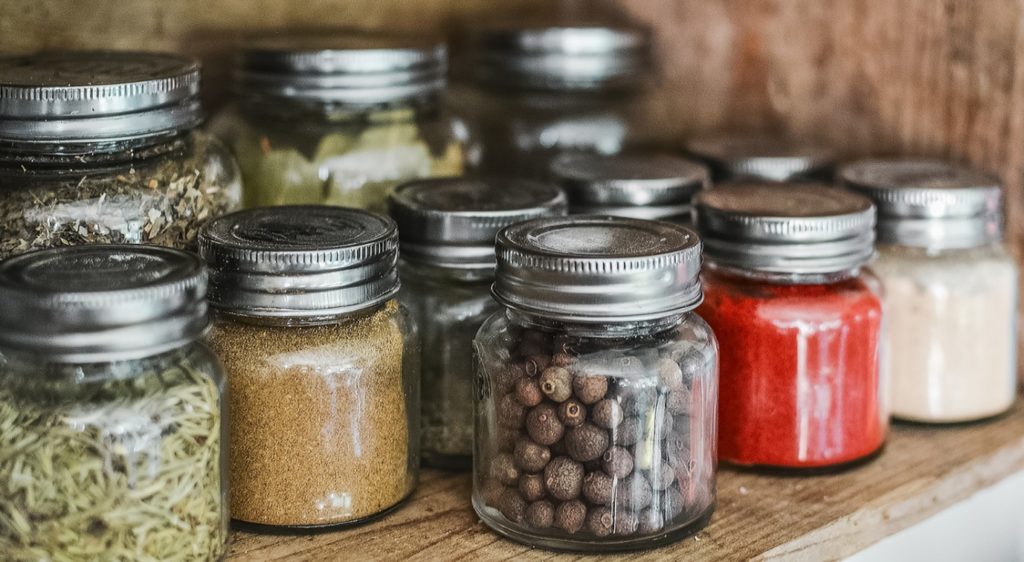
Nowadays, we’re all aware of the impact that plastic is having on our environment and people across the world are looking for ways to reduce usage. But look around your kitchen, you will see most products you buy come in plastic and unnecessary packaging. It can be overwhelming and feel like an uphill struggle knowing what to do to play your part in the war against plastic.
The thing to remember is that we all start somewhere, and any small change can make a big difference down the line. Here are 5 easy ways to reduce the amount of plastic you use in your kitchen that you can get started on today.
1. Reuse your grocery bags
Each year, it’s estimated that 500 billion to 1 trillion plastic bags are used worldwide. One of the simplest things you can do is to reuse the ones you already have! More and more people are planning ahead and taking their old plastic bags when going shopping but what about when you’re caught without a bag? Do your bit by investing in a reusable fabric grocery bag. They’re inexpensive and fold up small enough to keep in your handbag, stashed away in your glove compartment or even your coat pocket, so when you find yourself in a situation where you need a bag, you’re not caught short. This can really make a difference to picking up new plastic bags every time you go shopping.
What about that plastic bag you have in your kitchen, the one which is full to the brim of other plastic bags? The key is not to go and throw them all out – that would go against being more sustainable! Why not look for new ways to use them? You can wrap meat, ready to be stored in the freezer, use them to line fridge compartments to keep them clean, pack away your summer clothes during the winter months to keep dust-free – get creative and you’ll find that there are tons of uses for your old plastic bags.
2. Cut out plastic wrap!
In the 70 years since plastic started being mass produced, we’ve used enough plastic to wrap the Earth in plastic wrap! Imagine where all that plastic is now, and how we could possibly sustain that type of pollution. The answer is, we can’t! Cutting down or completely removing plastic wrap and sandwich bags from your kitchen is a great way to help the environment – and it’s easier than you think. Nowadays there are many alternatives, some of which actually work better than plastic.

- Beeswax wraps can safely wrap sandwiches and cheese, cover dishes and keep fruit and vegetables fresher for longer.
- Glass or metal lunchboxes last much longer than their plastic counterparts.
- Reusing jars, bottles and takeaway containers can ensure you avoid having to buy any storage items at all.
3. Re-use dishcloths
When your dishcloth is looking worse for wear, don’t throw it out! It can probably be revitalised and last for months rather than days. Regularly sanitise your dishcloths and then wash with your laundry once a week to remove staining. When your dishcloths have got to their end of life and really do need throwing out, consider ensuring you buy natural cleaning cloths that can be recycled or make use of old items of clothing to create cleaning rags.
4. Buy concentrated cleaning products
Do you check your cleaning product packaging to see if it is recyclable? Many items are, but the fact is that most of us simply throw out things such as trigger bottles and then buy a new one. There are a few things you can do here…
- Repurpose old trigger bottles – wash out and fill with water to spritz your plants or fill with watered down fabric conditioner to freshen up upholstery.
- Buy your cleaning products in bulk, concentrated form. You’ll massively reduce the amount of packaging required, the water used for the products and the fuel used to ship. There are many brands that sell hard-working cleaning products in concentrated strength that are great alternatives to your high street brands. Use your recycled trigger bottles and mix with water to the product guidelines.
5. Visit zero-waste food shops
Zero-waste shops are popping up all over the country. You can take your own jars, boxes or bags and fill them up with all manner of food cupboard staples. These shops are particularly great for dried foods (pasta, rice, cereal) as well as nuts and dried fruit. Not only are you doing your part for the environment, but glass jars filled for your dried goods also make a much better design statement on your shelves!
These tips are a great place to start and should help you on your way to finding even more ways to reduce the amount of plastic in your kitchen.

This article was written by Annie McFadden of The Cleaning Collective
Very interesting ideas. Great tips for a beautiful kitchen. I really liked this. Thanks for sharing.